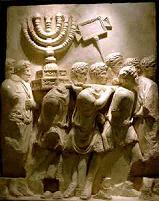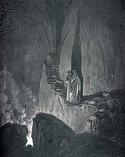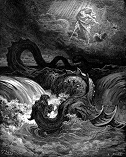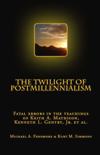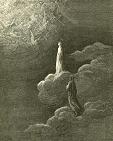Was the Eschaton Local?
Kurt Simmons
A new book is being published in Preterist circles whose author and implications argue that the Genesis creation account and flood were merely local events and that Adam of Genesis was not the first man God created. Yes, startling to say the least. Imagine Paul’s surprise to learn that the one man to whom he attributes the fall of the whole human race was not the first man at all!
Wherefore, as by one man sin entered into the world, and death by sin; and so death passed upon all men, for that all have sinned: Rom. 5:12
Paul here teaches that sin entered the world through the one man, Adam; because of Adam’s transgression, all men were constituted sinners. That is, they inherited Adam’s fallen nature and cannot rise above their carnality; the motions of sin in their flesh bring them into bondage to the law of sin and death. All who attain to an age and condition of accountability come under condemnation for sins committed in the flesh. Elsewhere, Paul says that in Adam all die. (I Cor. 15:22) Sin and death in the world are thus attributed to the first man, Adam.
But this book, which denies the literal creation account of Genesis, teaches by implication that Adam was not the first man. Its author is on record stating ““Why preterists would insist on a biological reading of ‘Eve the mother of all living’ in Genesis 3 baffles me. Eve is prophetic of the Church, just as Adam is prophetic of Christ. Genesis 3 is about covenant not biology.” Elsewhere he states: “So long as preterists are committed to a covenantal rather than cosmological reading of ‘heavens and earth’ in biblical redemptive history the idea of a covenantal, rather than cosmological reading of the original creation of the ‘heavens and earth’ in Genesis 1:1 is a legitimate possibility.” Eve not the mother of all living? Genesis 1:1 a “covenantal creation”? This is where people end up who take the journey down the road of Old Earth Creationism and the “day-age” theory.” By these statements their author thus denies Adam the first man and one of Christianity’s most fundamental tenants! What could behoove someone to propose a doctrine so novel?
The reason this book argues for a local flood and local creation is that the authors have bought into the fundamental error that the eschaton (second coming) was local. They reason that if the “heavens and earth” of II Pet. 3 were local and described events confined to Palestine, the heavens and earth of Genesis must be interpreted the same way. This is the worst sort of reasoning! By this approach, every instance where the words heaven and earth occur must be understood in reference merely to Palestine, or some other localized place upon earth. What an astonishing notion! All reference to the universal canopy of heaven and the circle of the earth is now removed from the Bible and we are to adopt a new hermeneutic understanding these terms figuratively for Palestine!
Wow! But what could be further from the truth than the idea that the eschaton was local? The Bible plainly states that the coming of Christ in judgment would be world wide. (See below) Thus, the entire premise of the book is false! That’s right! The entire premise of the book, arguing a local flood and creation are based upon the false premise of an eschaton confined to Palestine. Moreover, the premise is doubly false in that even if it were granted that the eschaton was local and the heavens and earth of II Pet. 3 had only Palestine in view, it does not logically follow that all other occurrences of these terms must be understood this way! II Pet. 3 is prophetic; it is of a totally different genre than Genesis and other books of history. We do not read Revelation the same way we read Ruth or Judges, why would we read Genesis the same way we read II Peter or the prophets? The very suggestion that Genesis is of the same genre as Revelation is frivolous upon its face. This sort of apologetic attempt to reconcile the Bible with the errors of modern science have been rejected long ago. Former, regius professor of Hebrew at Oxford, James Barr, notes:
Probably, so far as l know, there is no professor of Hebrew or Old Testament at any world-class university who does not believe that the writer(s) of Gen. 1-11 intended to convey to their readers the ideas that (a) creation took place in a series of six days which were the same as the days of 24 hours we now experience (b) the figures contained in the Genesis genealogies provided by simple addition a chronology from the beginning of the world up to later stages in the biblical story (c) Noah's flood was understood to be world-wide and extinguish all human and animal life except for those in the ark. Or, to put it negatively, the apologetic arguments which suppose the 'days' of creation to be long eras of time, the figures of years not to be chronological, and the flood to be a merely local Mesopotamian flood, are not taken seriously by any such professors, as far as I know.[1]
Examples of Universal Judgment at the Eschaton
As the following passages show, the eschaton was plainly world-wide.
Dan. 2:28-45 – Thou sawest till that a stone was cut out without hands, which smote the image upon his feet that were of iron and clay, and brake them to pieces.
This is one of the most important prophecies of the Bible and it does not even mention the Jews or Jerusalem. The famous dream of Nebuchadnezzar depicts four world empires until the coming of the kingdom and Messiah; it portrays Christ’s coming in terms of the world government and inhabited earth being reduced to rubble in the days of the fourth world empire and the mountain of the Lord’s kingdom growing up in its place. The rubble to which the image is reduced answer the “elements” of II Pet. 3 and point to the socio-political fabric of the pre-parousia world.
Ps.2:8, 9 – Ask of me, and I shall give thee the heathen for thine inheritance, and the uttermost parts of the earth for thy possession. Thou shalt break them with a rod of iron; thou shalt dash them in pieces like a potter’s vessel.
This Psalm is about the resurrected, glorified Christ and the kingdom given him of the Father. Christ’s kingdom is more than just the church; it includes all earth’s nations, which he rules with a rod of iron, dashing to pieces those that disobey. The dashing here corresponds to the dashing of the image in Nebuchadnezzar’s dream and is eschatological. It is also world-wide.
Ps. 110:5, 6 – The Lord at thy right hand shall strike through kings in the day of his wrath. He shall judge among the heathen, he shall fill the places with the dead bodies; he shall wound the heads over many countries.
This Psalm, like the one before, speaks to the eschatological day of wrath of Christ upon the heathen; the eschaton would entail the devastation of many countries.
Hag. 2:6, 7; 3:21, 22 – For thus saith the Lord of hosts; Yet once, it is a little while, and I will shake the heavens, and the earth, and the sea, and the dry land; and I will shake all nations, and the desire of all nations shall come: and I will fill this house with glory, saith the Lord of hosts…I will shake the heavens and the earth; and I will overthrow the throne of kingdoms, and I will destroy the strength of the kingdoms of the heathen.”
This verse is important because it is quoted by the Hebrew writer as about to be fulfilled in his day. (Heb. 12:26) Its first application is to the rebuilding of the Jerusalem temple under Zerubbabel; its second and ultimate application was to the kingdom and church of Christ. Haggai foretold a time when the wealth and power of the nations would accrue to the benefit of the Jerusalem temple, by the fall of worldly powers. This became a type of the victory of the church at the eschaton. As Preterists, we have interpreted this passage as quoted by the Hebrew writer in terms of Jerusalem’s fall, but, as we see, its actual, original, and intended scope was universal – the eschaton would be a time when all nations were shaken and the throne of heathen kingdoms overthrown. We should also note that the heavens and earth in this context point to higher powers and earth’s governments; they have no covenantal significance themselves.
Rev. 1:7 – Behold, he cometh with clouds; and every eye shall see him, and they also which pierced him: and all kindreds of the earth shall wail because of him. Even so, Amen.
This last passage can be translated in more narrow terms to say “all the tribes of the land shall wail because of him.” But no translation in print does this, nor would it fit within the imagery of Revelation, which portrays the eschaton in universal terms, far surpassing Judaea and Jerusalem. Moreover, the word “also” – they also which pierced him – meaning the Jews, signifies that they too would see him in addition to earth’s other peoples.
II Tim. 4:1 - I charge thee therefore before God, and the Lord Jesus Christ, who shall judge the quick and the dead at his appearing and his kingdom
The time for the appearing of Christ and his kingdom was within the lives of the apostles. (Matt. 16:27, 28) I confess that I do not know everything that is involved with judging the quick, but I do know that the living includes more than those residing in Palestine. The eschaton was a time when all men came under judgment.
Acts 17:30, 31 – And the times of this ignorance God winked at; but now commandeth all men everywhere to repent: because he hath appointed a day, in the which he is about to judge (melle krinein) the world in righteousness.
Paul spoke these words in Athens. The time of judgment that was about to overtake the world (Gk. kosmos) entailed more than Jews; all men everywhere were about to feel the rod of Christ’s correction for rejecting his gospel and persecuting his church.
These are just a few of the passages holding out a universal coming. The Catalogue of World Disasters at the end of this newsletter demonstrates the actual events the above verses point to. As Preterists, we are going to have a hard time meeting opponents in debate and persuading people of an AD 70 fulfillment if we make the argument the eschaton was purely localized in Judea, while ignoring passages showing Christ’s coming was world-wide in breadth and sweep. I would suggest that, not only do these and similar passages point to a world-wide coming of Christ, but that cosmic language used by the prophets carries a similar meaning and import.
Catalogue of World Disasters
|
[1] The letter is posted at http://www.geocities.com/ilgwamh/day.html
To receive Kurt Simmons’ e-mail newsletter, The Sword & The Plow, click the Subscribe link:
All rights reserved.
